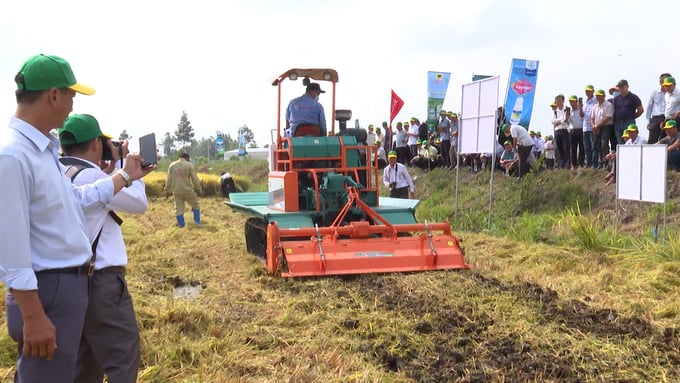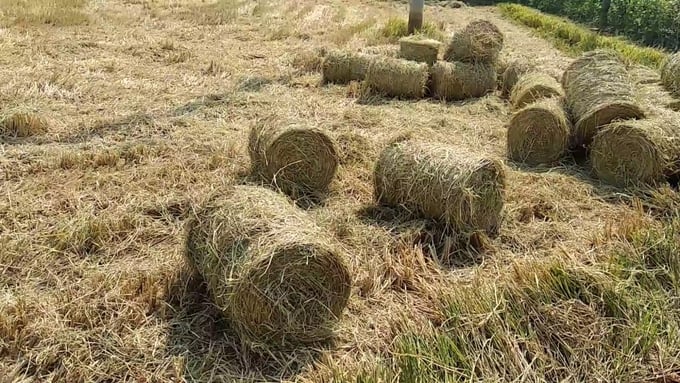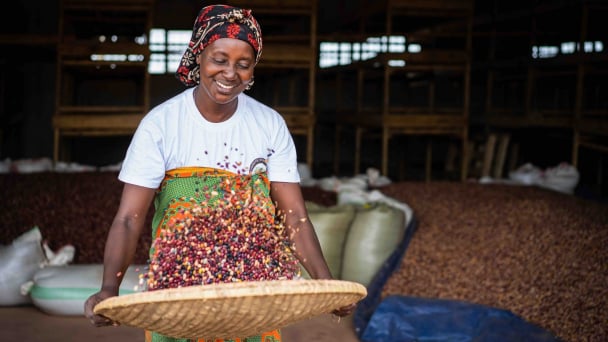June 28, 2025 | 23:36 GMT +7
June 28, 2025 | 23:36 GMT +7
Hotline: 0913.378.918
June 28, 2025 | 23:36 GMT +7
Hotline: 0913.378.918

Professor Nguyen Bao Ve hopes that people will pay attention to managing straw after harvest.
Straw represents a massive source of organic material, comprising up to 50% of the total weight of rice plants. On average, each hectare of rice cultivation yields between 10 to 12 tons of straw. For a farmer managing 10 hectares and planting three crops per year, this means they would need to deal with up to 300 tons of straw annually - an enormous amount.
Straw, along with other by-products generated during rice farming, possesses substantial value. By utilizing scientific and technological advancements, farmers can transform this straw into various products, such as organic fertilizers, mushrooms, animal feed, or, on a larger scale, use it as raw material for industrial boilers.
Despite its potential, the task of collecting such a large volume of straw is not straightforward. Professor Nguyen Bao Ve, the former head of the Agricultural Department at Can Tho University, notes that it would take an individual several days to gather all the straw left in the fields after harvest. He emphasizes: "Without machinery to mechanize this process, the difficulties involved are considerable".
This bottleneck has resulted in a long-standing practice among the people in the Mekong Delta, as well as throughout the country, of burying straw in the fields after the harvest. Unfortunately, this method inadvertently increases the risk of organic poisoning for the upcoming crop.
Mr. Ve elaborates that straw is essentially organic material. When it is plowed into the soil, it undergoes decomposition through the action of various soil microorganisms, including bacteria, fungi, and actinomycetes. However, if this decomposition occurs in waterlogged conditions, the oxygen from the atmosphere is unable to penetrate the soil. This creates an environment that favors the growth of anaerobic bacteria, which then break down the straw.
The decomposition process yields several by-products, such as CH4 (methane), CO2 (carbon dioxide), H2S (hydrogen sulfide), NH3 (ammonia), and various organic acids. Among these by-products, H2S and organic acids are particularly harmful, as they can be toxic to the roots of rice plants. This issue is especially pronounced in acidic soils; when straw is buried under flooded conditions, it can lead to increased iron (Fe2+) toxicity in rice plants, particularly during the critical first 3 to 4 weeks after land preparation.

Farmers use machinery to manage straw after harvest.
When rice plants suffer from organic poisoning and exposure to hydrogen sulfide (H2S), several symptoms emerge. The older leaves begin to yellow, while the younger leaves exhibit yellowing in their leaf blades. The plants tend to become stunted and show poor tillering, which is critical for optimal growth. Additionally, the roots turn from brown to black, often developing a foul smell, and a significant number of roots may die off. This decline in root health results in a loss of the plant's ability to oxygenate effectively, making it more vulnerable to iron (Fe2+) toxicity. Consequently, the rice plants struggle to absorb nutrients adequately, leading to nutritional imbalances and increased susceptibility to diseases, such as brown spot.
“Burning straw is equivalent to burning money, and selling straw is like selling blood. It is essential for farmers to grasp these immediate benefits, in addition to the potential for future carbon credit sales, in order to formulate effective straw management strategies”, Mr. Ve emphasized.
According to this agricultural expert, to achieve high efficiency in straw management, farmers must pinpoint specific methods to address the two primary greenhouse gases released by rice cultivation: CH4 and N2O. CH4 is predominantly emitted from the rice roots during the waterlogged growth phase, while N2O is primarily generated from nitrogen fertilizer applications.
For small-scale farms, farmers can chop the straw into smaller pieces and spread it evenly across the field in rows, then apply a microbial solution. However, in the case of larger agricultural operations, this expert suggests that mechanization is necessary to manage straw in an efficient and effective manner,
According to studies conducted by Can Tho University, it is recommended that farmers, after harvesting rice, should plow the fields and allow the straw to decompose for at least one month before sowing the next crop. During this period, the fields should be flooded for 2 to 3 weeks to help facilitate the decomposition process.
In situations where plowing is not possible because immediate replanting is required after harvest, farmers should cut the stubble (which can be done using machinery) and ensure that all straw and stubble are removed from the fields prior to preparing the soil. The removed straw can then be utilized for cultivating straw mushrooms or can be composted by inoculating it with Trichoderma sp. This process will create organic fertilizer that can be reintroduced to the soil.
If farmers are unable to cut the stubble and remove it from the field, they should adopt a water management strategy. This involves draining the fields at 15 and 30 days after sowing. The water should be completely removed for at least 5 days, maintaining a water level that is 10 to 15 cm below the soil surface. Farmers should wait until cracks of approximately 2 to 3 mm form on the surface of the soil before reapplying water. To further enhance the resilience of the rice plants, the use of lime, phosphate, and potassium fertilizers is also recommended.

Managing straw is an important task that farmers need to prioritize immediately after the rice harvest.
One effective solution suggested by Professor Nguyen Bao Ve involves the use of a combine harvester to chop the straw into smaller pieces. After harvesting, the chopped straw should be spread evenly across the surface of the rice fields. Following this, it is recommended that farmers apply microbial fertilizers, which are designed to assist in the decomposition of the straw. It is crucial to incorporate the chopped straw into the moist soil right after the application of the microbial product, as this helps ensure that the microorganisms can function effectively.
Farmers should tailor the dosage of the microbial fertilizers based on the specific characteristics of their fields - whether they are dealing with alluvial soil, acidic soil, or gray soil. Additionally, the water level in the fields and the timing of the treatment will influence how much microbial product is needed. A key point to consider is the management of nitrogen emissions, specifically N2O, which can be a concern in rice cultivation. To mitigate this issue, it is vital for farmers to avoid the over-application of nitrogen fertilizers. Instead, they should explore the option of using slow-release fertilizers or specialized formulations of NPK (nitrogen, phosphorus, potassium) that can better meet the nutritional needs of the rice plants while minimizing greenhouse gas emissions.
Through trials of using specialized NPK fertilizers in five localities: An Giang, Hau Giang, Dong Thap, Long An, and Tay Ninh, Mr. Ve observed that yields in some areas increased by up to 50% compared to the control group. Notably, the rice plants showed robust growth and quick tillering.
"By reducing CH4 emissions, the risk of organic poisoning in rice will decrease, which helps maintain soil fertility and boosts productivity. Furthermore, if N2O emissions can also be reduced, it will lead to fewer pest issues in the fields, while simultaneously lowering production costs for farmers", the professor emphasized.
Translated by Phuong Linh

(VAN) ECOEYE Korea expressed interest in cooperating with Vietnam in transferring advanced recycling technologies and developing the carbon market.

(VAN) At the SB62 Conference, the Vietnamese negotiation delegation engaged with several partners to promote cooperation on climate change response in Vietnam.

(VAN) Deputy Minister of Agriculture and Environment Hoang Trung emphasized the need for a comprehensive plan for the crop production sector to reduce emissions.

(VAN) International policies show that food system transformation cannot be separated from social inclusiveness, cross-sectoral integration, and multi-stakeholder coordination.

(VAN) Vietnam and China are strengthening connectivity and cooperation in the field of crop varieties and agricultural materials, paving the way for sustainable development in the agricultural sectors of both countries.

(VAN) Over the past 20 years, Hai Phong has reduced the number of bears in captivity from 500 to just over 10, thanks to the efforts of the forest protection force.

(VAN) Prime Minister Pham Minh Chinh held talks with Chinese Premier Li Qiang on June 24, in Tianjin, China.